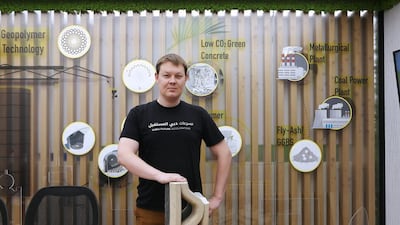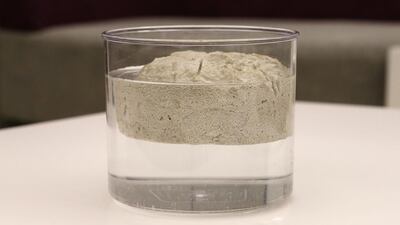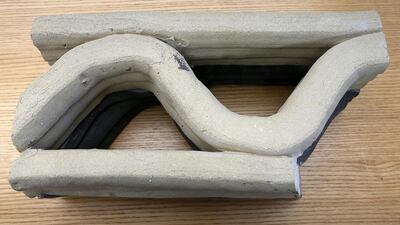A start-up enrolled in Dubai’s Future Accelerators programme has created a “green” cement compound from industrial waste geared for use in 3D printing.
Renca, a joint venture between Russian businessman Andrey Dudnikov, 33, and Alex Reggiani, 40, an Italian, has created a geopolymer cement from industrial by-products that uses only a 10th of the energy compared with traditional Portland cement.
The company is working with Dubai Municipality to develop its material for use in 3D printing projects in Dubai. Mr Dudnikov said that it is also looking to set up a plant for its product in the city.
Mr Dudnikov set up Renca with Mr Reggiani, a geologist and mineralogist, in January last year after meeting at a Geopolymer Institute conference in France.
Mr Dudnikov, who has knowledge of the concrete industry as well as a laboratory in Russia, said the pair have since collaborated with companies in the 3D printing sphere such as Russian firm Apis Cor (which recently built a house in 24 hours) and the Singapore Centre for 3D Printing at Nanyang Technological University.
The geopolymer cement and concrete produced from industrial waste such as pulverised fly ash and ground granulated blast slag has greater thermal insulation properties than regular concrete, so is better in hot climates at resisting heat.
Fly ash is a fine powder produced from burning pulverised coal during power generation, while granulated blast slag is a by-product of iron and steelmaking.
However, geopolymer cement’s main benefit in 3D printing is that it is cheaper to use than Portland cement, which needs additives to work properly.
“For 3D printers you have to adjust the properties of concrete. It should be fluid enough for the 3D printer and it should set very quickly. When the first layer is in place, the second layer will come straight after.
“To achieve this with normal concrete you have to add a lot of additives, so it becomes expensive. With geopolymer concrete, you can adjust the properties of the cement with the amount of raw materials you add. It’s easy to regulate, achieves fast settings and it is easy to use in these [hot] temperatures,” Mr Dudnikov explained.
He said Renca in the next few weeks will begin talks with potential local investors.
“We are very interested in establishing here. It’s a huge market and people are interested in implementing the technologies. They really move fast here. We want to take part in this and our technology can provide a lot of benefits.”
According to a report published by Transparency Market Research in December, the global market for green cement products stood at US$14.8 billion in 2015. It is predicted to grow at 11.3 per cent per year to reach $38.1bn by 2024.
Holley Chant, a senior executive specialising in sustainability at Keo International Consultants, said that green concrete use has become more prevalent across the region as companies seek to achieve higher sustainability scores under rating systems like Leed or Estidama.
“A lot of the rating systems mandate materials like that. For iconic events like the World Cup, there’s a whole green procurement programme around them, for which green concrete is a significant product you have to use.”
mfahy@thenational.ae
Follow The National's Business section on Twitter






